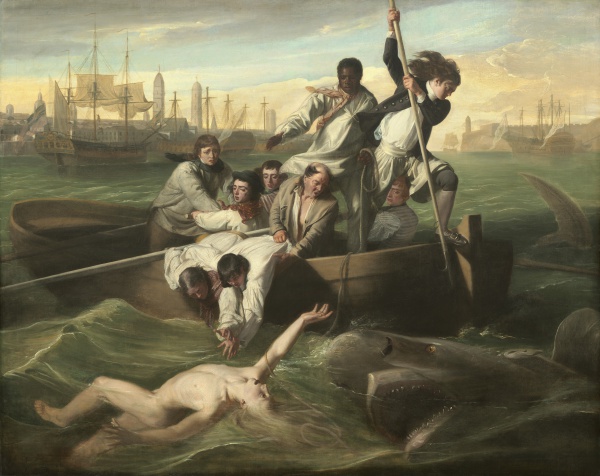Facts About Watson and the Shark
"Watson and the Shark" is an intriguing oil painting by the American artist John Singleton Copley. It captures the dramatic rescue of a young English boy, Brook Watson, from a shark attack in Havana, Cuba. Copley created three versions of this gripping scene. The 1778 original is showcased at the National Gallery of Art in Washington, D.C., a replica can be found at the Museum of Fine Arts in Boston, and a smaller version is housed at the Detroit Institute of Arts.
The painting is inspired by a real-life incident from 1749 when Watson, then a 14-year-old cabin boy, lost his leg to a shark in Havana harbor. The artwork vividly portrays the intense moment of his rescue during the third attempt. Watson later pursued a distinguished career, eventually becoming the Lord Mayor of London.
Copley and Watson developed a friendship, leading to the commission of this painting. This piece marked a significant transition in Copley's career as he moved to London and began focusing on large-scale historical paintings. The work is romanticized, drawing inspiration from Renaissance art, ancient sculptures, and contemporary paintings.
The composition reflects the influence of artists like Rubens and Raphael. Copley skillfully captures a spectrum of emotions, from sheer terror to heroic bravery, in the faces of the characters. Notably, the painting underwent several compositional changes during its creation.
Despite never having visited Havana or witnessing a shark attack, Copley relied on prints and illustrations for details. This led to some inaccuracies in the depiction of the shark's anatomy.
The painting debuted at the Royal Academy in 1778, and Copley produced additional replicas. Watson later bequeathed the painting to Christ's Hospital, where it was displayed until it was sold to the National Gallery of Art in Washington, D.C., in 1963.

 Canada
Canada